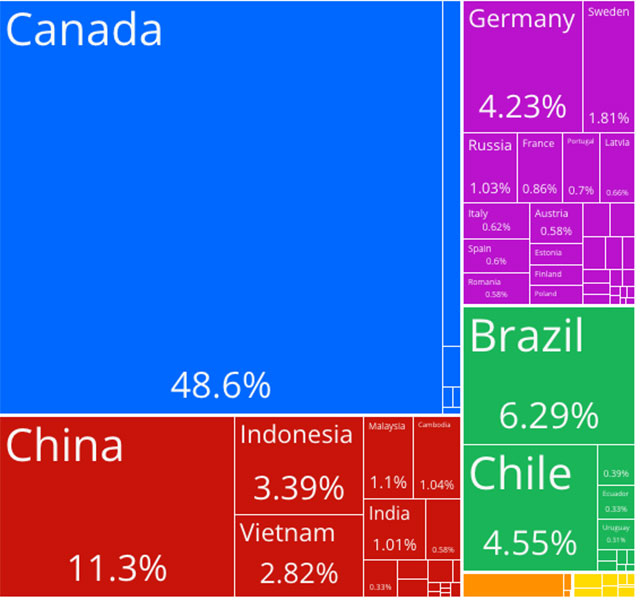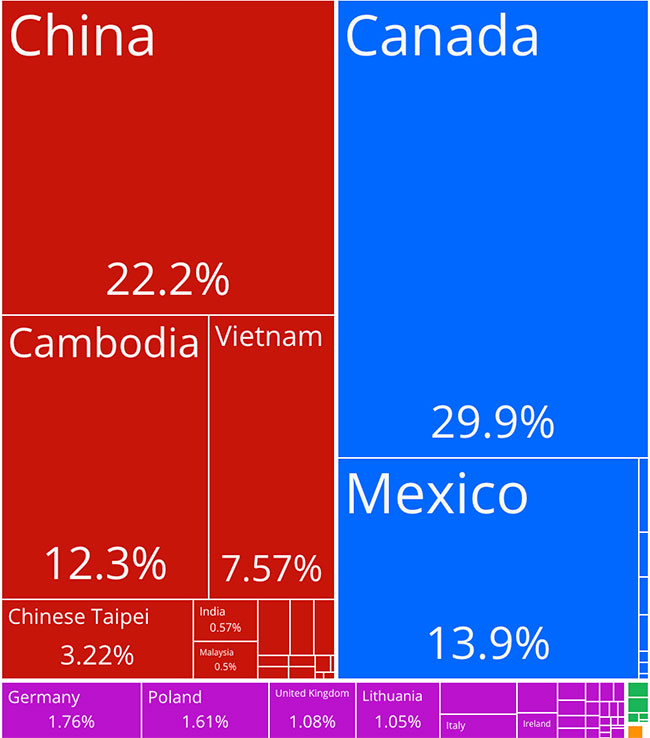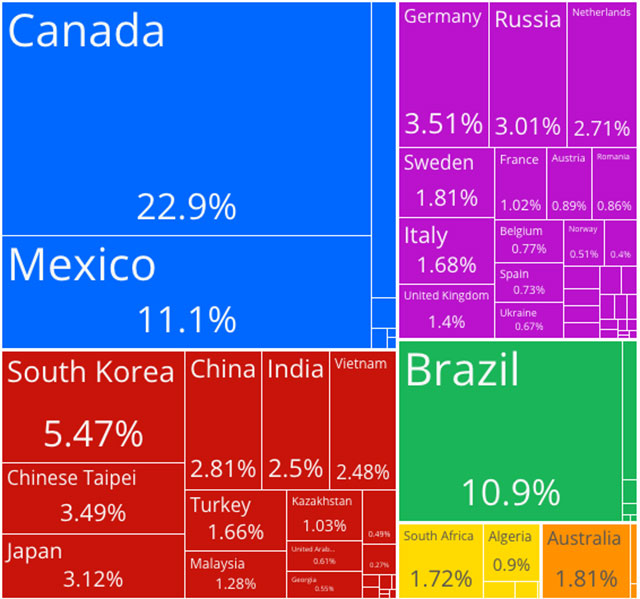Trump’s Tariffs: Another Disaster for the Families Who’ve Lost Everything

President Donald Trump says he’ll impose punitive tariffs on America’s allies and rivals this weekend—25 percent on imported goods from Canada and Mexico and 10 percent on Chinese imports. We don’t yet know which industries he will exclude (Trump has mentioned oil and gas) or how the targeted countries will respond—but the expert consensus is that tariffs will drive up prices for American companies and, in turn, consumers.
That’s particularly unwelcome news for the Floridians and North Carolinians whose homes and businesses were damaged or destroyed by Hurricanes Milton and Helena, the thousands of Los Angelenos who lost everything in the recent fires, and any American community, now or in the near future, that is compelled to rebuild in the face of ever more frequent and destructive climate-change-driven disasters.
Trump’s tariffs will “fan the flames of the already challenging environment that Californians face in recovering from the LA fires,” says Ann Harrison, an economist at UC Berkeley’s Haas School of Business who specializes in international trade. “A tariff of 25 percent levied on foreign imports would likely be paid by domestic California businesses and residents consuming lumber, food, cement, plastics, and other necessities. If the tariffs are passed through to importers of these goods, then rebuilding homes could be much more expensive.”
Consider the vulnerabilities: In 2022, according to visual data compiled by the Observatory of Economic Complexity (OEC), Canada was the source of almost half of the roughly $35 billion worth of wood products imported into the United States, with China second.

The US imported nearly $3 billion worth of plastic building materials in 2022. Here’s where they came from:

What about the $2.3 billion worth of cement America imports? Turkey is the biggest source, but the runners up are Canada and Mexico.

It goes on like this. The majority of imported gravel and crushed stone is from Canada and Mexico. Nearly a quarter of imported bricks are supplied by China and Canada. The United States took in $43.2 billion worth of steel in 2022, and about 37 percent came from the three countries Trump is targeting.

As the Guardian‘s Nina Lakhani reported a few days ago, Trump’s deportation orders are already posing problems for communities stricken by fires and floods. Clearing toxic debris in a disaster’s wake is difficult and dangerous work, and with unemployment hovering around 4 percent, it’s hard to find people willing to do it. For better or worse, America depends on immigrants, often undocumented, for work that is low-paid and unpleasant, albeit essential.
At the best of times, the construction industry depends heavily on immigrants, from grunt laborers to contractors and skilled tradespeople, including carpenters electricians, landscapers, masons, plumbers, roofers, tilers, and welders. In some states, including California and Florida, an estimated 40 percent of construction industry workers are immigrants. Some have green cards, legal work permits, or, until last week, temporary deportation protections—which President Biden granted but Trump has since rejected. Others are in the United States illegally and are therefore at the mercy of Immigration and Customs Enforcement (ICE).
As the administration pursues its deportation agenda, which experts predict will be economically destructive, even legal immigrants will be reticent to make themselves vulnerable to getting swept up in ICE raids. Any worker fearful of la migra may well choose to avoid disaster recovery zones, lest those areas prove too tempting a target for immigration enforcement.
Any labor shortages that result from deportations, or the fear of deportation, will inevitably slow the pace of recovery and drive up the costs. The double-whammy of deportations and tariffs could prove devastating for recovery efforts. “Trump’s tariffs are insane, not to put it into too-technical language. And the timing couldn’t be worse,” says Joseph Stiglitz, a prominent economist at Columbia University who was awarded the 2001 Nobel Memorial Prize for economics.
“Combined with labor shortages that may arise from his immigration policies, they are even worse. And with the climate-related disasters, such as the wildfires in LA, there will be an even greater need both for construction workers and materials. Like it or not, we are heavily dependent on both from outside our borders, and changing that can’t occur overnight.”
Source: View source



